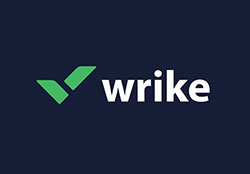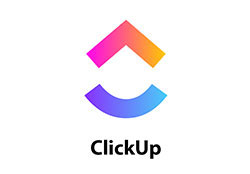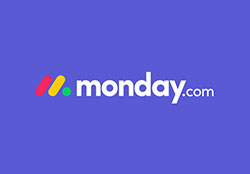How to write an RFP – an essential skill in the world of business, and a process that, when done correctly, can lead to exceptional outcomes for your organization. Crafting an RFP requires understanding its format, objectives, and best practices.
Let’s break down what an RFP is, why it’s so significant, and how you can ace creating one using an RFP template and guidelines.
An RFP, or Request for Proposal, is a document issued by a business that details specific requirements for a project. It invites vendors to propose solutions and bid for the job, ensuring a structured RFP process.
Think of it as a call-to-action for potential suppliers to convince your business that they’re the perfect fit for your needs. It’s like issuing a proposal request to find the best vendor proposal that aligns with your RFP requirements.
RFPs are a critical cog in the machinery of corporate procurement. They provide a structured process for companies to gather information, compare offerings, and select vendors through competitive bidding. They’re all about transparency, ensuring you get the best quality service within your budget, and finding the right vendor proposal that meets the RFP evaluation criteria.
Understanding the Basics of RFP
Let’s dive into the nitty-gritty of RFPs to ensure we’re on the same page, from understanding the RFP format to managing the RFP timeline.
What is an RFP?
An RFP is your wish-list for a project. It outlines your project’s goals, deliverables, and timeline, plus your evaluation criteria for proposals. It’s like a guidebook that steers potential vendors towards crafting a proposal that aligns with your requirements. Think of it as a tender document that provides a clear RFP format for vendors.
Purpose of an RFP
The core purpose of an RFP is to ensure you attract the right vendors, those who can deliver on your expectations and contribute to your success. It’s your tool for communicating what you need, why you need it, and how you’ll decide who’s the best fit based on the RFP scoring system.
Difference between RFP, RFI, and RFQ
While these acronyms often get used interchangeably, they represent different stages of the procurement process:
- An RFI (Request for Information) is all about gathering information about capabilities of various suppliers, ensuring transparency in the early stages.
- An RFP (Request for Proposal) is where you ask suppliers to propose creative, relevant, and cost-effective solutions for your specific business needs, often using RFP software or management tools.
- An RFQ (Request for Quotation) is generally used when the requirements are clear, and price is the main or only factor in selecting a successful bidder, ensuring a clear RFP negotiation process.
Preparing to Write an RFP
Before we jump into writing an RFP, there’s some groundwork to cover, including understanding the RFP process and best practices.
Identifying the Needs of Your Organization
Your organization’s needs are the backbone of your RFP. Identify what you need, why you need it, and how it fits into the RFP objectives.
Establishing your needs will guide your project’s objectives, requirements, and success criteria, ensuring that your RFP response aligns with your vendor requirements.
Setting Clear Goals and Objectives
Once your needs are nailed down, it’s time to translate them into goals and objectives. These will be the yardstick against which potential vendors will align their proposals and craft their vendor proposal.
For instance, if your project involves setting up a donation system for a non-profit organization, you’ll need to consider whether features like recurring donations offered by platforms like Donorbox are critical for your project. This is where the RFP evaluation criteria come into play.
Gathering Necessary Information
Doing your homework is crucial. Gather as much information as you can about the project, market conditions, potential vendors, budget constraints, and risk factors. The more informed you are, the better your RFP will be, ensuring a comprehensive RFP management approach.
Are you looking for a great project management app?
Here are our recommendations:
Writing an Effective RFP
Let’s get into the art of crafting an effective RFP, using an RFP template and guidelines to ensure clarity.
Key Elements of an RFP
A robust RFP has a few vital components. Each plays a unique role in informing vendors, setting expectations, and guiding the RFP negotiation.
Project Overview and Background
The overview gives potential vendors a snapshot of what your project entails. It includes details about your organization, the business needs driving the project, and the RFP announcement.
Let’s say your project involves revamping your company’s email marketing approach, which might include sending out regular newsletters. In such cases, you’d need to explain the concept of a newsletter, its purpose, and how it impacts your project, ensuring that it aligns with the RFP format.
Scope of Work
The scope of work is where you outline the tasks, deliverables, and objectives of the project. It should provide a clear picture of what the successful bidder will be expected to achieve, ensuring that the RFP requirements are met.
Deliverables
This is a list of all the goods, services, or outcomes that the successful vendor must deliver. Make these as specific as possible, so vendors know exactly what’s expected of them, ensuring that they meet the RFP scoring system.
Timeline
The timeline includes all the key dates, including when the project will start, the milestones, the expected end date, and any RFP amendments that might arise.
Budget
Your budget is the financial constraint within which the project must be delivered. While you may not want to reveal your entire budget upfront, giving vendors an idea of your range can ensure you receive realistic bids and adhere to the RFP best practices.
Evaluation Criteria
This outlines how you’ll judge each proposal. Evaluation criteria might include cost, vendor experience, proposed solution, the quality of the proposal itself, and alignment with the RFP objectives. It’s essential to have a clear RFP scoring system in place to ensure a structured evaluation.
Tips for Writing an Effective RFP
Writing an RFP is a skill, and like all skills, there are techniques to help you get better, including understanding RFP best practices and guidelines.
Clarity and Conciseness
Keep your language clear, concise, and to the point. This ensures vendors know exactly what you need and don’t get lost in industry jargon or ambiguous statements. A well-crafted RFP template can guide you in maintaining clarity.
Detailed Requirements
Detail your requirements as precisely as you can. The more information vendors have, the better they can tailor their proposals to your needs, ensuring their vendor proposal aligns with your RFP requirements.
Transparency and Fairness
Be open about your evaluation process and ensure all potential bidders are treated equally. This encourages a healthy competitive bidding process and increases the likelihood of receiving top-quality proposals that meet the RFP evaluation criteria.
Common Mistakes to Avoid
There are pitfalls to sidestep in the RFP process. Steer clear of these common mistakes: Being vague about your requirements, focusing solely on cost instead of value, not including stakeholders in the process, and rushing the process. It’s also essential to avoid overlooking the RFP timeline and not using RFP software or management tools that can streamline the process.
RFP Process and Participants
Navigating the world of RFPs involves several steps and players. From planning to posting and then processing proposals, each stage is vital. And every individual involved plays an essential role in bringing your project to life. This journey includes the RFP announcement, vendor meetings, and the eventual RFP negotiation with the chosen vendor.
Steps in the RFP Process
Crafting an RFP is just the start of your journey in the world of business procurement. There are a handful of steps to follow in this dance of procurement, ensuring you adhere to RFP best practices.
- Identify Needs: Like we discussed before, you’ve got to know what you want before you can ask for it. This first step is all about nailing down what your project needs to succeed and understanding the RFP requirements.
- Write the RFP: Put pen to paper, or fingers to keys, and draft your masterpiece. This is where you’ll set out your project needs, timeline, and evaluation criteria. Using an RFP template can guide you here.
- Publish the RFP: Once your RFP is polished to perfection, it’s time to send it out into the world. You can do this via your company website, trade publications, or direct invitations to potential vendors. This is essentially your RFP announcement.
- Field Questions and Clarify: Be prepared to answer questions and clarify any points of confusion. You want to ensure vendors understand your project to the tee and align with your RFP guidelines.
- Review Proposals: Once the proposals come rolling in, it’s time to review them using the RFP scoring system. Look for solutions that match your project needs and offer the best value.
- Choose a Vendor: After some careful consideration, select the best fit for your project, ensuring they meet the RFP evaluation criteria.
- Negotiate and Award Contract: The final step involves RFP negotiation regarding the terms and awarding the contract. Congratulations, your project is now ready to roll!
Key Players in the RFP Process
In the RFP theater, there are a few star roles, each playing a part in the RFP management.
- Project Manager: That’s you, friend! You’re the driving force behind the project, overseeing the process from beginning to end, ensuring the RFP timeline is adhered to.
- Potential Vendors: These folks are eager to win your business. They’re the ones who will receive your RFP, ask questions, and submit their vendor proposal.
- Selection Committee: This group of individuals is responsible for reviewing the proposals and selecting a vendor. It might include stakeholders from various departments in your company, ensuring the RFP objectives are met.
Role of Procurement Teams
Procurement teams are like the backstage crew of the RFP process. They ensure everything runs smoothly, from identifying potential suppliers to handling paperwork and managing relationships, ensuring a structured RFP process.
RFP Templates and Tools
In the digital age, there are plenty of tools to help you out. From templates to RFP software, these resources can simplify your RFP process and ensure you’re hitting all the right notes.
Benefits of Using RFP Templates
RFP templates are like blueprints for your proposal. They help ensure you’re not missing any key components, like the RFP format, and provide a professional structure for your RFP. They can save you time, reduce stress, and ensure consistency in your RFP management.
Where to Find RFP Templates
There are countless resources out there to find RFP templates. From professional networking sites to RFP software platforms, procurement consultants, and even RFP guidelines available online, you’re sure to find a template that fits your project needs and aligns with RFP best practices.
Using RFP Software and Tools
If you’re looking for a more streamlined approach, consider RFP software. These tools offer features like pre-built templates, automated scoring, and centralized communication platforms. They can help simplify the RFP process, manage the RFP timeline, and keep all your RFP details in one place.
Remember, the goal here is to make your RFP process as efficient and effective as possible. Whether that’s using a simple template, adhering to RFP guidelines, or investing in sophisticated software, find the method that works best for you. After all, a well-crafted RFP can set the stage for a successful project and a strong relationship with your vendor, ensuring you receive the best vendor proposal.
After the RFP: Evaluation and Selection
Once your RFP has been sent out into the universe, and the proposals have poured in, the real fun begins. It’s time to sort through the responses, evaluate each one based on the RFP evaluation criteria, and finally, select the perfect vendor for your project.
Evaluating Proposals
Going through the stack of proposals can feel like looking for a needle in a haystack. But remember, you’re not just looking for the sharpest needle; you’re looking for the right fit. Here are a few things to keep in mind:
- Adherence to RFP Requirements: Did the vendor tick all the boxes you set out in the RFP? You want to find a proposal that fits your brief like a glove and aligns with the RFP format.
- Quality of the Proposed Solution: Is the vendor’s solution innovative, practical, and relevant to your project’s needs? It should be all that and a bag of chips, ensuring it meets the RFP objectives.
- Vendor Experience and Reputation: Check if the vendor has the experience and credibility to deliver what they promise. A seasoned vendor with positive testimonials can bring a sense of security to your project, ensuring they align with the RFP guidelines.
- Price: It’s not always about going for the cheapest option. Remember, you’re looking for value – the best mix of quality and cost, ensuring a competitive bidding process.
Take your time during the evaluation stage. It’s a crucial part of the RFP process that can make or break your project, ensuring you adhere to the RFP best practices.
During your evaluation, let’s say your project involves the setup of an intranet platform. It’s not only important to look at the cost but also at the specific features, user-friendliness, and the overall performance of their suggested platform. Tools like Happeo’s Intranet Platforms Comparison could provide valuable insights in such scenarios, helping you in the RFP negotiation phase.
Selecting the Right Supplier or Contractor
Once the evaluations are done, it’s decision time. When choosing your vendor, consider their proposed solution, price, and the rapport you’ve built with them during the RFP process. It’s not just about selecting a vendor based on the RFP evaluation criteria; it’s about starting a relationship and ensuring they align with your RFP objectives.
Post-selection Process
After the vendor is chosen, there are a few more steps to take care of in the RFP management:
- Notify the Chosen Vendor: Let the successful bidder know they’ve won the contract. They’ve probably been waiting for your call and are eager to align with the RFP requirements.
- Inform the Unsuccessful Bidders: While it might not be the most fun part of the process, it’s important to let the other vendors know they weren’t chosen this time. Who knows, you might want to work with them on future projects, ensuring a competitive bidding process.
- Negotiate the Contract: Now, it’s time to negotiate the final contract, ensuring a clear RFP negotiation process. Discuss the project details, payment terms, and any other aspects that need ironing out.
- Kick-off the Project: With the contract signed, it’s time to get started on your project. Congratulations, you made it through the RFP process!
FAQ on How To Write an RFP
What is an RFP, and why is it critical?
An RFP, or Request for Proposal, is a document businesses use to invite bids for a project. It specifies what the company needs and how potential suppliers can meet those needs, ensuring a structured RFP process.
This process is essential because it ensures that your business gets the best possible service or product at a competitive price, adhering to RFP best practices.
How do I kick-start the process of writing an RFP?
Writing an RFP starts with understanding your needs and objectives, ensuring you align with the RFP guidelines. What problem are you trying to solve? What do you hope to achieve with this project? Once you’ve defined these, you can outline your project requirements and start crafting the RFP using an RFP template.
What’s the structure of a well-prepared RFP?
A robust RFP usually consists of an introduction, project overview, scope of work, qualifications, project timeline, budget details, selection criteria, and submission process. This structure provides a roadmap for both the issuer and the bidder, ensuring they understand the RFP format.
How can I define the project’s scope effectively in the RFP?
Defining the project’s scope in your RFP involves outlining your goals, deliverables, tasks, and any constraints. It’s about painting a clear picture of what you expect the finished project to look like and what tasks it entails, ensuring alignment with the RFP objectives.
What should I include in the qualifications section of my RFP?
In the qualifications section, highlight what you’re seeking in a potential bidder. This could include specific skills, experience, team structure, previous work, references, and any required certifications. The aim is to ensure that the chosen provider is a good fit for your project and meets the RFP requirements.
How do I set a realistic timeline in the RFP?
Setting a timeline involves considering each phase of the project, from kickoff to completion, ensuring you adhere to the RFP timeline. Allow room for unexpected delays.
Remember to include important dates like proposal deadlines, decision dates, and desired project start and end dates, aligning with the RFP format.
What details should I specify about the budget in my RFP?
Your RFP should provide potential bidders with an idea of your budget range for the project, ensuring you adhere to RFP best practices. You can also ask bidders to itemize their bids, providing a detailed cost breakdown.
This fosters transparency and helps in comparing and evaluating different proposals based on the RFP evaluation criteria.
How can I establish fair selection criteria in the RFP?
The selection criteria should reflect the key qualifications and project requirements you’ve outlined earlier in the RFP. These criteria might include the bidder’s experience, cost, proposed methodology, and responsiveness to the RFP, ensuring they align with the RFP objectives.
How should the proposal submission process be detailed in the RFP?
Specify how and when proposals should be submitted, ensuring a clear RFP process. Include details about the format you want the proposals in, any required supporting documents, and whether digital or hard copies are needed. This clarity ensures a smooth submission process and adherence to RFP guidelines.
What are common pitfalls to avoid when writing an RFP?
Common pitfalls include being too vague about your needs, not providing a clear RFP timeline, overlooking the budget details, and neglecting to define the RFP scoring system. It’s essential to be clear and comprehensive in your RFP to attract quality bids that align with the RFP format.
Conclusion on How To Write an RFP
Crafting an RFP can seem like a daunting process, but remember, it’s all about communicating your needs and finding the best vendor to fulfill them, ensuring they meet the RFP requirements. Each stage, from understanding the basics and preparing to write the RFP, to sending it out, evaluating proposals, and finally selecting a vendor, plays a critical role in ensuring your project’s success.
In the end, writing an effective RFP is all about clarity, detail, and fairness, adhering to RFP best practices. And who knows, with a bit of practice, you might just find that you’ve become quite the RFP maestro.
Remember, there’s no one-size-fits-all approach to RFPs. Find your rhythm, discover what works best for you and your organization, and don’t be afraid to learn as you go, ensuring you follow the RFP guidelines. After all, every RFP is a new opportunity to connect with great vendors and make your project a smashing success.
If you enjoyed reading this article on how to write an RFP, you should check out this one about software development budget.
We also wrote about a few related subjects like how to hire a web developer, ALM tools, hire a web development team, application lifecycle management and web development companies in Serbia.
- Entertainment Unleashed: Apps Like Showbox for Movie Lovers - April 17, 2024
- Harnessing Video Annotation: The Backbone of Advanced AI Applications - April 17, 2024
- Innovation Turned Quirky: What Happened to Quirky? - April 17, 2024












